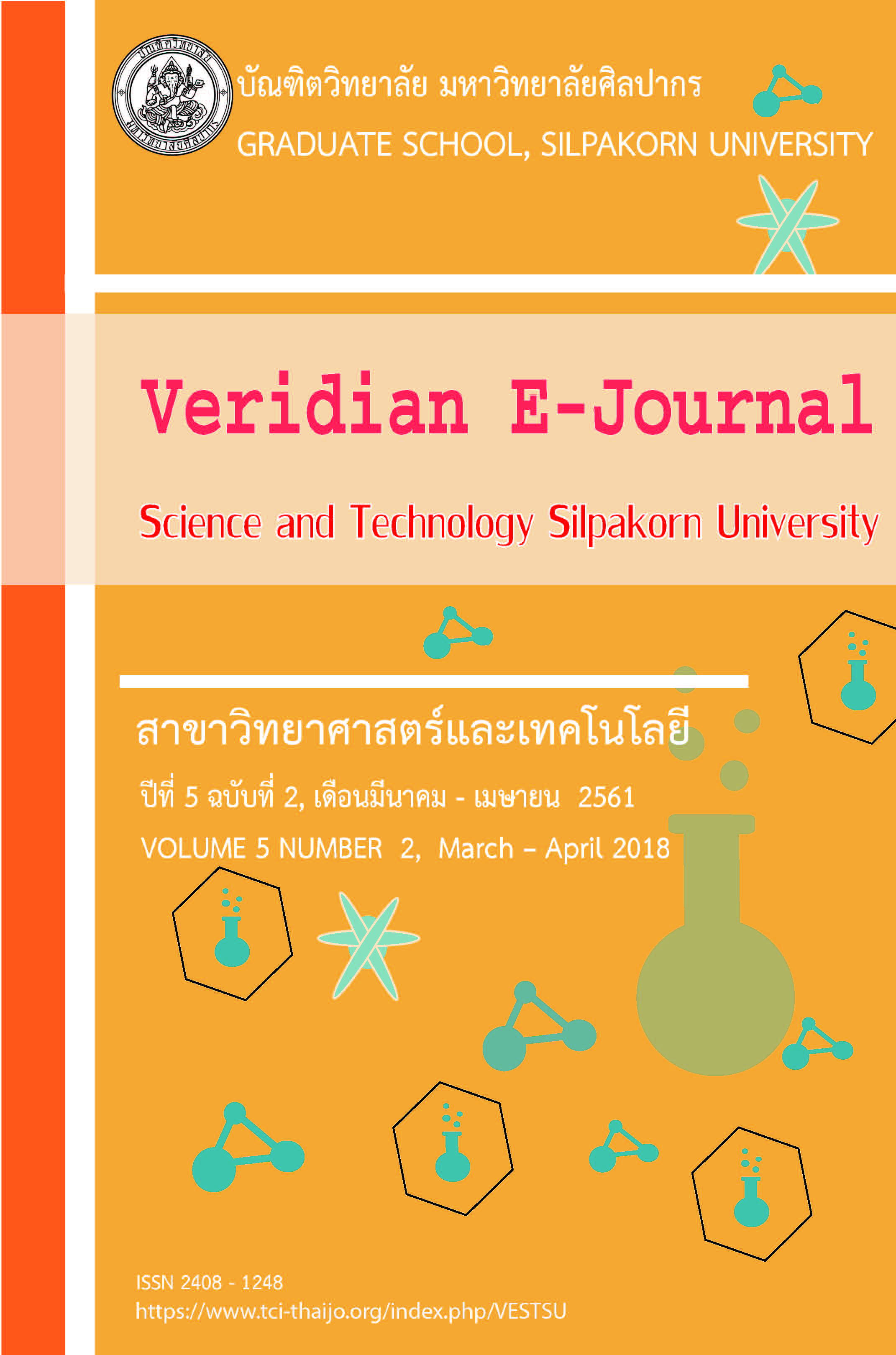ความหลากหลายทางพันธุกรรมของประชากรช้างเลี้ยงในภาคเหนือและภาคตะวันออกเฉียงเหนือของประเทศไทย (Genetic diversity of the domestic elephant populations in North and Northeast of Thailand)
Main Article Content
Abstract
การศึกษาความหลากหลายทางพันธุกรรมของช้างเลี้ยงในกลุ่มประชากรช้างภาคเหนือ และภาคตะวันออกเฉียงเหนือของประเทศไทย โดยใช้ microsatellite marker จำนวน 18 ตำแหน่ง ทำการเก็บตัวอย่างเลือดช้างภาคเหนือและภาคตะวันออกเฉียงเหนือของประเทศไทยจำนวน 55 และ 31 ตัวอย่าง ผลการวิเคราะห์ได้ค่าเฉลี่ยอัลลีลต่อตำแหน่งของ number of alleles เท่ากับ 9.333±5.412 (ค่าต่ำสุด = 3 อัลลีล และค่าสูงสุด = 23 อัลลีล) จากการวิเคราะห์ค่า maximum similarity โดยโปรแกรม FAMD และนำมาสร้าง UPGMA tree พบว่ากลุ่มประชากรช้างภาคเหนือและภาคตะวันออกเฉียงเหนือของประเทศไทยเป็นกลุ่มประชากรเดียวกัน นอกจากนี้การวิเคราะห์ด้วยวิธี principal coordinate analysis พบว่าประชากรช้างภาคตะวันออกเฉียงเหนือ น่าจะเป็น subset ของประชากรช้างภาคเหนือ จากการวิเคราะห์หาค่า observed number of alleles, gene diversity, Shannon’s Information index, number of polymorphic loci and % polymorphic loci ของประชากรช้างภาคเหนือมีค่าเท่ากับ 1.958±0.200, 0.222±0.158, 0.357±0.210, 161 และ 95.83 ตามลำดับ และของประชากรช้างภาคตะวันออกเฉียงเหนือมีค่าเท่ากับ 1.875±0.332, 0.220±0.169, 0.348±0.229, 147 และ 87.50 ตามลำดับ ซึ่งจากผลการวิเคราะห์สามารถสรุปได้ว่าช้างภาคเหนือมีแนวโน้มมีความหลากหลายทางพันธุกรรมมากกว่าช้างภาคตะวันออกเฉียงเหนือ
The objective of this research was to study the genetic diversity of domestic elephant populations in the North and Northeast of Thailand by using 18 microsatellite markers. Fifty-five and thirty-one of blood samples from the North and Northeast of Thailand were collected, respectively. The results showed that the average number of alleles per loci was 9.33±5.412 (min = 3, max = 23). Maximum similarity and UPGMA tree were computed and constructed by FAMD program. The results showed the genetic of elephant from North and Northeast were the same population. Moreover, the principle coordinate analysis found that the genetic of elephants in the Northeast population was subset of the genetic of elephants in the North population. Observed number of alleles, gene diversity, Shannon’s Information index, number of polymorphic loci and % polymorphic loci in the North population were 1.958±0.200, 0.222±0.158, 0.357±0.210, 161 and 95.83, respectively. While in the Northeast population were 1.875±0.332, 0.220±0.169, 0.348±0.229, 147 and 87.50, respectively. From the results, it can be concluded that northern elephants population tend to have higher genetic diversity than northeastern elephants population.

